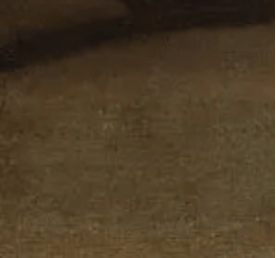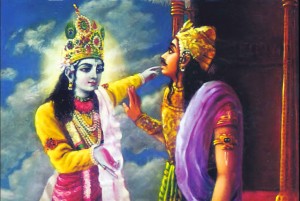Vernazzani, A. (2023). “How Artworks Modify Our Perception of the World” Phenomenology and the Cognitive Sciences 22, pp. 417-438.
(2)
One challenge against any theory of imagistic thinking is that images allegedly lack a logical structure and hence “cannot be bearers of thought” (Ch. 7). This is, in a nutshell, what Kozak calls the Metaphysical Challenge that he outlines in Ch. 2. A notable proponent of this idea is Fodor with his picture principle:
(2’)
[1] The picture principle applies to all icons, not just pictures (Fodor 2008, p. 174), which are a specific kind of icons.

Quilty-Dunn, J. (2016). “Iconicity and the Format of Perception.” Journal of Consciousness Studies 23(3-4), pp. 255-263.
Picture Principle: If P is a picture of X, then parts of P are pictures of parts of X. (Fodor 2008, p. 173)
[5] Further reflections on how images scaffold our perceptual (attentional) capacities, see my (2023).
Now, (1) cannot be meaningfully decomposed into:
Gauthier, I. & Tarr, M.J. (2016). “Visual Object Recognition: Do We (Finally) Know More Now Than We Did?” Annual Review of Vision Science 2, pp. 377-396.
[3] I am here only focusing on images or pictures with a distinctive real-world referent, such as photo of my desk or a portrait.
On this suggestion, what makes (2’) an analogous of (1’) is the fact that the arbitrary way of carving up Philippe de Champaigne’s picture does not enable the subject to single out any specific item for purpose of recognition and identification. Notice that recognition comes in degrees and levels of precision. We may thus expect a subject to be able to fully recognize an item x as an incunabulum, or perhaps merely as a book, or (in the worse epistemic scenario) simply as an object. In place of grammar or syntax, in the case of images the rules that govern canonical decomposition are rooted in specifically psychological-perceptual factors of object segregation and identification. From this point of view, an image scaffolds our perceptual and recognitional capacities in a way that is instrumental to its epistemic purpose (e.g. aesthetic, artistic, scientific, and so on).[5]
[2] Cf. for instance Quilty-Dunn 2016; 2020.
For these arbitrarily carved units make no sense. A canonical decomposition, i.e. a decomposition that still yields meaningful representational parts, should obey some (socially) codified linguistic norms. Since for the Fodorians icons or images do not (by stipulation) possess canonical decomposition, however we carve up an icon, we still get a representational part. So, if we take the following:
Hence, icons lack a logical form and are thus incapable of expressing logically complex thoughts. In order to illustrate this (and better bring into focus the issue that I would like to briefly discuss), consider a simple example:
There is much to unpack here, but Kozak’s core idea is that an image works by providing construction rules and invariants that enable the subject to locate the iconic content within a logical space (Ch. 7).[3] The invariances are what allows subjects to recognize the target by following the relevant instructions. In other words, an image provides, so to speak, “rules for seeing” a particular target.[4] On this approach, there are “no metaphysically or psychologically predetermined representational primitives, such as lines and dots” (Ch. 7), the account Kozak provides would offer a “non-psychological” explanation of recognition (Ch. 6). Rather, the representational primitives are the “properties highlighted by construction parameters by means of which we identify a referent.” Construction rules vary according to context (Ch. 6), and knowing such rules enables a subject to identify a referent. In a somewhat obscure passage, Kozak maintains that this secures images’ canonical decomposition (Ch. 7).

…homogeneous kind of symbol from both the syntactic and the semantic point of view. Each of its parts is a constituent, and each constituent gets a semantic interpretation according to the picture principle. (Fodor 2008, p. 174).
My suggestion places further psychological constraints on what and how may be highlighted by an image in a way that enables the subject to locate its content within a logical space. How (visual) recognition works is a controversial matter and object of intense research among psychologists.[6] For our purposes, it suffices to say that while this goes somewhat against Kozak’s declared intent of providing a “non-psychological” explanation of recognition (Ch. 6), I regard my remarks more as a complement and reinforcement to his fascinating measurement-theoretic account of images and imagistic thinking, rather than a criticism.
Fodor, J. (2008). LOT 2: The Language of Thought Revisited. Cambridge, MA: MIT Press.
(Philippe de Champaigne: Saint Augustine, 1645-1650)
(1) This sentence is meaningful
Quilty-Dunn, J. (2020). “Perceptual Pluralism.” Noûs 54(4), pp. 807-838.
References
Making a move analogous to (1’), we may slice up the picture arbitrarily, and thus obtain, for instance:
Piotr Kozak’s insightful Thinking in Images (Bloomsbury 2023) offers an original contribution to the philosophy and psychology of imagistic thinking. He carefully examines some challenges against imagistic thinking (esp. Ch. 2), and then develops an account of imagistic content (Ch. 6) and of imagistic thinking in light of measurement theory (Ch. 7). The book is long and contains many different claims and ideas, but I shall presently focus only on the issue of the canonical decomposition of images.
[4] I am somewhat perplexed by Kozak’s claim that iconic content provides rules for seeing the target. What is there to be seen for a subject are a set of design properties combined in a specific way for a particular purpose, although these properties may be combined in such a way as to provide instruction about how to mentally visualize a particular target.
According to the Fodorians, (2’) is still a representation, for Kozak (and me) it is not. According to Kozak images are canonically decomposable, hence they have far more expressive power than Fodor acknowledges. Kozak’s argument is in two-steps. Firstly, he attacks Fodor’s picture principle as resting on a demonstrably false premise, namely that every image-part is representational. Secondly, he advances a positive account of how his 2-D model of iconic content — developed in Ch. 4-6 — makes room for the canonical decomposition of images. I zoom in on this latter step and briefly discuss his 2-D model. Kozak provides the following account of iconic content:
The picture principle highlights a substantial difference between icons (or Kozak’s images) and discursive or linguistic-like representations.[1] According to Fodor (and the Fodorians)[2], the latter but not the former may be canonically decomposed, i.e. there is a codified way of carving them up such that only some ways of carving a sentence will yield meaningful parts. This in turn means that discursive representations have privileged parts, whereas icons are definitionally a
I agree with Kozak that images can be canonically decomposed. Clearly, if images can be canonically decomposed, the decomposition does not obey something like a set of (purely) social-conventional rules like in the case of language. This is not to deny that depiction does not make room for some degree of convention (as Kozak argues in Ch. 6), but my point is that what grounds the canonical decomposition of images are our psychological capacities.
[6] See for instance Gauthier & Tarr (2016).


